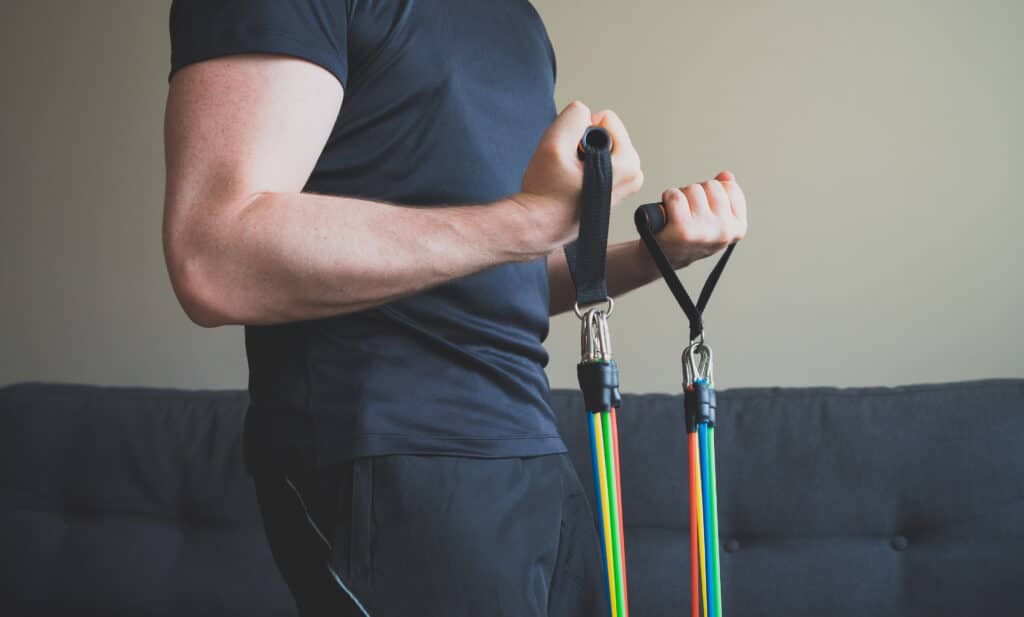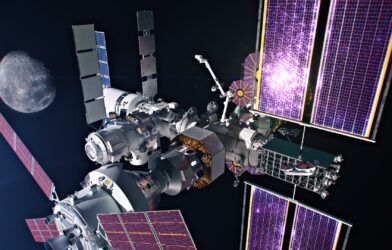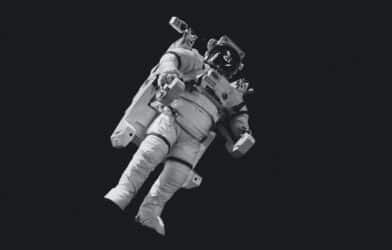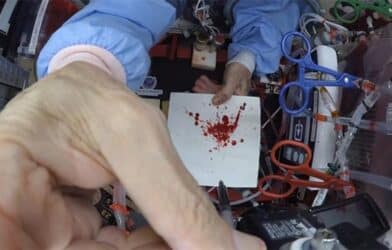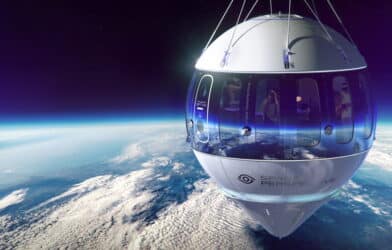Astronauts should exercise using resistance bands during space missions to avoid devastating bone damage when they touch back down on Earth, according to a new study. Researchers from the University of Calgary report that astronauts who did more deadlift training while out in space had healthier shin bones than those who did not.
Researchers say a jumping-based resistance exercise that puts heavy weights on the space travelers’ legs could do even more to help prevent bone loss and help them build bone while on missions. They also found that while astronauts’ shin bones partially recover, the amount of bone loss they sustain after one year is equivalent to ten years for non-astronauts.
For the study, researchers took bone scans of 17 astronauts, 14 of whom were men and three of whom were women. Scans were taken before spaceflight, when they returned to Earth and after six and 12 months of recovery. Study authors looked at the astronauts’ shin bones and forearms to work out how resistant the bone was to fracture, how much bone mineral was in bone tissue and how thick the tissue was. They also looked at exercises including cycling, treadmill running and deadlifting completed by astronauts in-flight and post-flight.
One year after flight the median results for 16 of the astronauts showed their shin bones had not recovered completely. Bone strength, using a measurement called failure load, was reduced by 52 newtons from 10,579 newtons at pre-flight to 10,427 newtons after one year. Total bone mineral density fell by 4.5 milligrams per cubic centimeter compared to pre-flight levels of 326.8 mg/cm3. The astronauts’ forearms were the same before and after spaceflight.
The bones of astronauts who had come back from missions lasting six months or longer had recovered less than those who had come back from shorter missions. Astronauts on missions longer than six months saw their median shinbone strength fall by 333.9 newtons after one year compared to pre-flight.
In astronauts on missions shorter than six months shinbone strength fell by 79.9 newtons. Similar differences were found for total bone mineral density in the shinbone. Altogether, nine of the astronauts (seven from long missions) did not fully recover shinbone total bone mineral density after 12 months.
Study authors conclude that the astronauts who performed more in-flight resistance band deadlift training saw their tibia bone mineral density recover the most.
“As well as currently used exercise routines, a jumping resistance-based exercise that provides high-impact dynamic loads on the legs may help prevent bone loss and promote the formation of bone on spaceflight missions.”
The findings are published in the journal Scientific Reports.
Report by South West News Service writer Gwyn Wright
